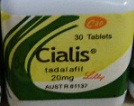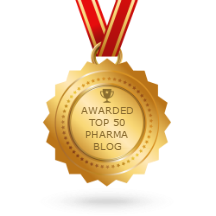by Gabriel Levitt, President, PharmacyChecker.com and Prescription Justice | Jan 23, 2015 | Counterfeit Drugs, Drug Safety

FDA Seized Counterfeit Cialis at International Mail Facility
The FDA issued a warning about counterfeit Cialis, an erectile dysfunction (ED) medication, being sold through the mail, which probably means it was purchased from a rogue online pharmacy. The fake Cialis is some whacky combination of Cialis’s active ingredient, tadalafil, and the active ingredient in Pfizer’s Viagra, called sildenafil. Apparently, the FDA seized the counterfeit product before it reached a consumer in the U.S. by mail.
Fortunately, over 99% of safe, personally imported prescription drugs are not seized at international mail facilities. Still, I’ve given the FDA considerable grief about seizing safe medications, which they usually deem “misbranded” or “unapproved” for intellectual property or labeling reasons – but in this case FDA protected someone from a bad drug and that’s cool.
According to Reuters, FDA “cautioned against purchasing prescription medicines online, noting that some websites may be selling unsafe products.” The FDA also said that there is no indication that the “legitimate supply chain” – meaning the U.S. domestic supply chain – is at risk and that licensed U.S. pharmacies are safe. That’s probably true but there’s no reason to believe that the legitimate supply chains in other countries aren’t safe either. In other words, foreign online pharmacies verified by PharmacyChecker.com continue to sell real Cialis, the one marketed by Eli Lilly, for a lot less than they do here. The lowest cost Cialis (10mg) is $14.25 at a PharmacyChecker.com-approved international online pharmacy. That compares with a whopping $44.92 per pill at a one of the lower cost VIPPS-approved online pharmacies (VIPPS is the online pharmacy verification program of the National Association of Boards of Pharmacy).
The FDA recommends that consumers do not take Cialis supplied in bottles matching one or more of the following descriptions:
- lists “AUSTR81137” on the front of the bottle;
- does not include an NDC number on the front of the bottle, such as “NDC 0002-4462-30” for the 20 mg tablets;
- does not include the tablet strength in a colored box;
- has different patterns and colors; it has yellow and darker green designs on the front label;
- has misspellings; it lists, “CLALIS is a product of: Eli lilly Australia PTY Limited” on the side of the bottle;
- lists the manufacturer location as “112 Wharf Road, WEST RYDE, NSW 2114” on the side of the bottle; and
- lists “Lot: AC 066018, Exp: 01SEP17” on the side of the bottle.
I don’t agree with one of these – the bolded one – and here’s why: safe and real Cialis, or other genuine medications, ordered from online pharmacies won’t necessarily have an NDC number on it. In fact, if you were to travel to another country and purchase meds, real prescription drugs, in a brick-and-mortar pharmacy, they would not have an NDC number. That’s because NDC is unique to drugs packaged for sale in American pharmacies. Other countries use different labeling systems; for example, Canada’s version of NDC is called DIN (drug identification number).
One last important note: the truth is that many people want to get ED meds online, whether it’s Viagra, Cialis, or Levitra, without a prescription. PharmacyChecker.com strongly recommends that you don’t do that. The studies show that online pharmacies that don’t require a valid prescription are more likely to sell fake or otherwise bad medication, especially bogus ED meds!
Tagged with: cialis, Eli Lilly, Pfizer, Viagra
by Gabriel Levitt, President, PharmacyChecker.com and Prescription Justice | Jan 16, 2015 | Drug Prices, New Drugs, Specialty Drugs
(Read Part 1 and Part 2)
Last year we discussed the cost of hepatitis C (“Hep C”) wonder drug Sovaldi for Americans paying in cash or using their health insurance. Notably absent, in both analyses, were how our most economically challenged citizens could afford the $84,000 treatment. According to Governing, “Many of the estimated 3.2 million people living with Hep C in the United States are poor, imprisoned or elderly, which means the cost of Sovaldi falls disproportionately on Medicaid and Medicare.”
To treat every one of the 750,000 Americans with Hep C who receive state-funded treatment through Medicaid or the prison system with Sovaldi would cost $55 billion, according to Express Scripts, and budget realities mean that that simply won’t happen. Public health officials will use prior authorization guidelines in determining who will be covered, similar to the way benefits administrators with private health plans determine eligibility.
Unlike private insurers, drug manufacturers must give Medicaid a 23% discount. The lower price is helpful but does not necessarily make Sovaldi affordable. Current models of drug pricing under Medicaid are not tailored to handle Sovaldi and other specialty medications. According to a letter sent from National Association of Medicaid Directors, “Simply put, the federal Medicaid statute is not designed to allow states to respond to this new pricing approach for pharmaceuticals. Sovaldi is just the first of many such exceptionally high-cost ‘curative’ specialty drugs.”
That letter recommends several federal policies to address Sovaldi and other high priced medications, including the creation of a special federal fund for specialty meds, similar to Ryan White federal funds for AIDS; additional rebates for specialty medications that reach a certain threshold in the percent of the population affected; and, my favorite because of the ludicrousness of international price disparities where U.S. prices are twice the average of other rich countries, “Modify the ‘best price’ policies for breakthrough drugs to include the selling price in other countries.”
There are more suggestions by the NAMD, and they are good future possibilities, but we’ve got to get down to the bottom line here: if you have Medicaid, then under what circumstances will you get Sovaldi? The states are all over the place in terms of coverage policies, but usually a person has to be very sick to get Sovaldi!
The Sovaldi Squeeze, written for Medicaid Health Plans of America (MHPA) by Viohl and Associates, takes a good stab at identifying Medicaid coverage policies. Thirty-five states require prior authorization. Most, if not all, of those states require enrollees to take a liver biopsy; the results of which determine whether or not Sovaldi will be covered. Some states will only cover someone who has not used illicit drugs and alcohol for three years. Other states, including Illinois, Florida, and Louisiana will limit coverage terms to make sure the patient is complying properly with the regiment. For example, Louisiana will only cover Sovaldi for 28 days at a time.
The most extraordinary criterion I saw is referred to as the “once in a lifetime” rule in the MHPA report. As you imagined, if a patient doesn’t adhere to their covered Sovaldi treatment then it won’t be covered again.
Like we discovered with private health insurance and certainly for people who must pay the full price in cash, there are serious obstacles to obtaining Sovaldi even if you’re covered on Medicaid. The costs are just too prohibitive. Yes, Gilead is right that unlike maintenance medications Sovaldi (and other new Hep C meds we’ll discuss below) can cure the patient, which means lower healthcare costs overall. Nonetheless, the market is not established to handle such insane upfront costs.
You might expect that more treatments with the curative-type power of Sovaldi would add competition to bring down prices. Indeed, there are three new Hep C specialty meds on the market. Olysio, marketed by Jansen is cheaper than Sovaldi, but still sells for $840 per pill. Harvoni is actually more expensive than Sovaldi, carrying a price tag of$94,500 for three months, about ten grand more than Sovaldi. Unfortunately, like Sovaldi it is made by Gilead so the competition factor is diluted! Harvoni does have the advantage of being a stand-alone treatment, however, whereas Sovaldi is taken in conjunction with ribavirin.
Viekira Pak, marketed by Abbvie, was approved just last month. Express Scripts wisely decided to make a deal with Abbvie that it would exclude Sovaldi in exchange for lower prices on Viekira Pak! Sure enough, Gilead fought back against Abbvie by making a deal with CVS Health that Harvoni and Sovaldi would be the preferred Hep C medications for CVS’ PBM business.
And which drug is the best? We’re not going to touch on that but the online magazine, Hep Mag, has an excellent summary on all the new Hep C medications discussed above, which could prove helpful.
The market dynamics for Sovaldi and other breakthrough medications like it are highly complex but largely stacked in favor of pharmaceutical company profits against taxpayers and consumers. Neither Medicaid nor private health insurers can afford to treat the millions of people who are infected with Hep C.
To conclude, I’ll leave you with the words of Caroline, who commented on our Part 1 post about paying for Sovaldi in cash, as she sums it all up perfectly:
“Well I’m insured but this medication is not on the formulary for either health care companies offered at my job. They are two well-known companies and according to my GI doctor, none of the insurance companies are approving this drug unless you are at least at stage 3 liver disease. So I’ll have to get a little sicker before I can get it. Thanks Gilead!”
Tagged with: Gildead Sciences, Harvoni, Hepatitis C, medicaid, Sovaldi
by Gabriel Levitt, President, PharmacyChecker.com and Prescription Justice | Jan 8, 2015 | Counterfeit Drugs, Drug Prices, Generic drugs, Personal Drug Importation
I wish I was joking about the racy headline above. The United States is not the only great power in which citizens go without medication because of cost. The cancer drug Gleevec (imatinib), made by Novartis, costs 23,500 yuan, or about U.S. $3,783, per month, in China. Gleevec is not covered by health insurance in China so people there must pay for it out of pocket. Ten years ago, Lu Yong was diagnosed with chronic myelocytic leukemia and was prescribed Gleevec. After facing bankruptcy due to his drug costs, Lu discovered a generic version of Gleevec, called Veenat, and began purchasing it by mail-order from India where it is an approved drug, at a cost of only 3,000 yuan, or about $482, per month — 87% less than the brand name drug.
Lu’s condition improved quickly using the generic version. He began to help people with leukemia who he met online obtain Veenat. Now, according to the English edition of Caixin, an independent Beijing-based media outlet, he is facing criminal charges for credit card fraud and selling counterfeit medication. The same story was covered by official Chinese media under the headline “Leukemia patient prosecuted for buying pills overseas.” Lu has helped 1,000 people with leukemia obtain treatment. Three hundred of them are petitioning the authorities to have his name cleared.
The medications involved are real and clearly life-saving! So why is Lu being prosecuted for counterfeit drugs? Under Chinese law, any drug not specifically licensed for sale in China, even a genuine medication lawfully manufactured by an authorized drug company, is considered counterfeit.
The charge of credit card fraud was based on Lu’s using a foreign credit card to make the purchases. Lu said he did so because using domestic Chinese bank-issued credit cards for international purchases is nearly impossible.
Lu was not charged for procuring his own cancer medication. The charges were for directly facilitating the purchase of the drug for 1000 people, who consequently regard Lu as a hero.
When people can’t afford to obtain life-saving medication locally, the U.S, and all countries, should consider themselves morally obligated to expressly permit their citizens to obtain it internationally.
Tagged with: China, Gleevec, imatinib



